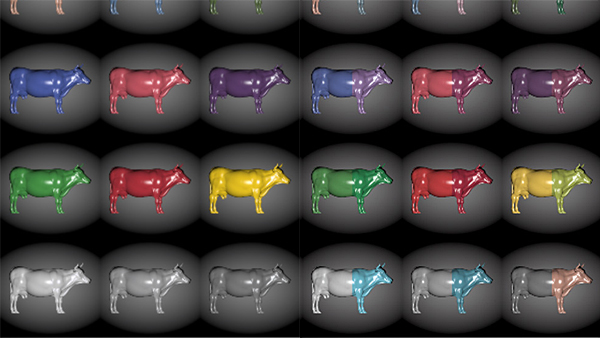Why Can't We See All the Colors (Wavelengths) Within One Color?
It's all because of two properties of the human vision system, trichromacy and univariance. Trichromacy refers to the fact that we have three types of cone photoreceptors, each sensitive to a different range of wavelengths. Vision scientists call them long-, middle-, and short-wavelength sensitive cones (LMS as shorthand), but they are sometimes referred to as red-, green-, and blue-sensitive (RGB). Univariance refers to the fact that there are no mechanisms within a single cone type to distinguish between different wavelengths of light. L cones, for example, respond to a range of wavelengths but the reaction produced by absorbing a photon of light is exactly the same regardless of wavelength. It is just the probability of that absorption that defines the cone's response.
The practical result of univariance is that there are many different ways to produce the same response within a cone. We perceive color by comparing the responses of the three cone types and since there are multiple, essentially infinite, spectral energy distributions that can produce the same response within a single cone type, there are also multiple spectral energy distributions that can produce the same combination of cone signals and therefore the same color perceptions. This is known as metamerism; stimuli with different spectral power distributions can produce the same integrated color responses.
This property of metamerism is what allows us to develop fairly simple methods for measuring and producing colors. For example, it is what allows us to have color televisions with only three primaries, red, green, and blue.
![]()
Explore the NEXT TOPIC at this level.
Explore the NEXT LEVEL on this topic.
Ever wonder ... Why is three an important number in color?
Updated: Dec. 31, 2010

